Triumph Des Willens
Introduction
The rise and fall of the Third Reich has been of interest to me since studying it as part of my History O-Level in a British Forces school in Gütersloh, West Germany in 1983. My studies only really covered the logistics of the rearmament and obviously the abomination that was the Final Solution, so whilst I was aware of Leni Riefenstahl and her infamous Triumph Of The Will documentary much later, I never really had the will to watch it.
Over the last few years, my interest has increased as I've picked up more library books and watched more documentaries of this time and finally the urge to watch this got a little overwhelming. I guess I was looking to see if the reputation of the film and its maker was justified in the vilification that followed the demise of Nazi Germany in 1945 and if Riefenstahl was in some part responsible for the events that followed her film.
Triumph Of The Will is a documentary film of the 1934 Nuremberg Rally, or the Reich's Party Congress to give its proper title, commissioned by Hitler himself and entrusted to Berlin-born actress and director Leni Riefenstahl (32 at the time of filming), more famous previously for Germanic 'mountain films' - thrillers set in the German Alpine range. One of her films prior to this documentary was called The Blue Light, a 'mountain film' written, produced, directed and starring Riefenstahl in a leading role. The film won the Gold Medal at the Venice Film Bennale in 1932 and was much admired by the German dictator, which may well explain how she came to be commissioned to make this piece.
This documentary helps to show the consolidation of Nazi power in Germany and it also helps to know the context of events leading up to this rally and film in September 1934. 30th June that year had seen the bloody purge of the notorious SA organisation and its leader Ernst Roehm, the latter seeking greater power sharing for his organisation. Just over a month later, the German President Field Marshall Von Hindenburg died aged 86, thus consolidating the Nazi dictator's power and becoming the sole leader of Germany - although in truth this had already happened behind the scenes, Von Hindenburg being a puppet President effectively since the Enabling Act was passed in 1933.
Leni Riefenstahl is a controversial figure, mainly due to this film. Triumph Of The Will is still banned for public screening in Germany, although it unsurprisingly won the National Prize for German Cinema in 1935 and received widespread critical acclaim within its host country. More surprisingly, the film received the Grand Prize at the Exposition Internationale des Arts et des Techniques in Paris in 1937, although protests by French workers showed that awareness was rising of the Nazi ideology that this film showcased.
Riefenstahl ultimately filmed 61 hours of footage that she whittled down to approximately 107 minutes. Whilst she only used footage filmed, she was not averse to mixing up her footage to follow her creative instinct. Overall this documentary contains 1155 shots and is quite possibly one of the greatest documentaries ever made, albeit as essentially a propaganda film for a despicable regime that would become one of the most hated and despised for centuries, and whose reputation still looms large some 64 years after the event.
Visual
As a spectacle, this documentary is triumphant. If you ignore the context and focus purely on the art, then you cannot fail to be impressed. Whilst watching the parades and the rally itself, you quickly realise just how many people were present at the time and over the course of the event. The Labour Service rally showcased 52,000 men and the Stormtrooper rally over 200,000; and this was not withstanding the numerous spectators and Party officials. These days you have to employ a CGI Fx house to create such a gathering, this was all real people. Stunning and rather chilling when you realise what followed.
Riefenstahl had a total of seventy-four cameramen at her disposal for the making of this film, nine of which would film pioneering aerial shots from an airship and a camera plane. Whilst some shots were clearly pre-planned, the majority of shots were down to the choice of the individual cameramen who understood Riefenstahl's preference for moving shots over the more traditional static shots conventionally used by the newsreels.
Filmmakers have forever borrowed from this film and Riefenstahl's pioneering techniques. I don't know if it was intentional in any way, but I couldn't help but think of the medal ceremony at the end of Star Wars when viewing the shot below.
Audio
1.0 Mono soundtrack that is pretty unimpressive. There is distortion and crackling throughout, not sure if that is deliberate but it removes a part of the immersive experience of watching the documentary. Herbert Windt created the very Germanic soundtrack from Wagnerian influences, folk music and military marches alongside patriotic German songs. He finishes off with, what else, the Nazi party anthem - the Horst Wessel song. The soundtrack was created entirely in the studio, mixing with actual recorded speeches and crowd reaction/applause.
Extras
Short Movietone newsreel footage of each of the following Nuremberg rallies between 1935 and 1938. It's amazing really that the Western democracies especially didn't do anything to counter the massive build up in the rearmament of Nazi Germany during this time.
There is also a detailed booklet that explains each scene and then contains a piece written by film historian Kay Gladstone that attempts to put the film and director in context.
Overall
It still amazes me, more than it ever did in my youth, how the likes of Hitler and the National Socialists swept to power and became so popular a dictator, leading his people to commit unspeakable atrocities and war crimes right up until the end of the Second World War and even after his death. After learning about Triumph Of The Will and its reputation, I also wondered if Leni Riefenstahl was partly to blame for the ascension to power of this ultimately mad and neurotic man.
Truth be told, the damage had already been done. Whilst it is clear that Riefenstahl has put together a fantastic collage of images that attempt to portray both Hitler and his regime in the best positive light, the size of the Nuremberg Rally filmed here was of a scale possibly never seen before. The crowds and participants were huge in numbers, drawn to Nuremberg and the perceived master orator in Hitler. The suitably over the top set design by Hitler's architect Albert Speer is stunning, as are the endless parades of fascist uniformed men and their standards. You can feel the belief and almost hysterical obedience oozing from every pore of most of those on display as choreographed militaristic display to symbolise the growing power of this once beaten nation. The various set pieces from the troops on the ground very much swearing allegiance in what they believed that Hitler and the National Socialists would bring to Germany; strength, honour and unity. They may have got that short term, but within 11 years their country was in ruins and the thousand year Reich was justly swept into oblivion before it had really begun - masters of their own downfall.
Riefenstahl was a master of shadow and light and used it to epic effect here, also pioneering the upward angled shots of Hitler in order to make him seem a bigger and fuller character. The camera is rarely still and some of the shots showcase the impressive size and scale of the events filmed. I cannot ever recall seeing so many marching men and flags ever. Some of the close up shots are almost Aryan males bathed in soft light as their eyes proclaim their belief and love for their Führer. What is quite telling, especially considering the role of Riefenstahl as a female director, is that the only uniformed people on show are male and all females present are in suitable female or regional traditional attire. Gender roles suitably showcased for the future Reich, the females as domesticated mothers of blue-eyed and blond Aryan children, with the menfolk either working the land or fighting for the fatherland and Nazi cause.
Hitler has an almost universal reputation as a mesmerising orator who swept the German people along with his powerful speeches. I found I was increasingly unimpressed by his speeches, finding them clumsy, almost hysterical and cliché ridden. Admittedly these were only brief highlights of what must have been said by the man, but I can't imagine that Riefenstahl picked his worst bits for inclusion in the film or that Hitler would have allowed its release if not satisfied. Maybe it's looking back on this with modern eyes or maybe part of its power was being part of the group experience and being enraptured by the words whilst amongst literally thousands of people who all needed something to believe in. Either way, I was unimpressed when watching whereas those present at the time willingly fought an aggressive war and committed massive atrocities in his name.
All the main Nazi leaders are there in places but with appearances kept to a minimum, the main focus being the Führer and his subjects. Rudolf Hess is mainly at his master's side, the handsome acceptable face of the cause grinning like a school kid as if he finally realises that their time is finally here. Göring looks out of place and uncomfortable, blustery and with all the signs of developing into the pretentious clown he would later look in his brightly coloured uniforms. Himmler pretends to be a leader of men, but is obviously a wannabe hiding behind the black and vicious uniform of the SS, marching out of step with his troops. Master of Nazi propaganda Josef Goebbels is also there to look on at the massed ranks admiringly, although he had little to do with Riefenstahl's vision as Hitler had given her free reign to pursue her artistic vision.
As a proclamation of the Nazi mastery over Germany, Triumph Of The Will succeeds beyond all measure and also serves as a warning of what was to come within five short years. The Western democracies failed to heed that warning and the World suffered as a result. Maybe this era needed to happen to take the World to where it sits now, it's extremely sad that so many had to die as events took their course though.
Leni Riefenstahl's documentary is a stunning landmark in film that would be heralded far beyond its era and gave director Riefenstahl a notoriety that kept with her until her death in 2003 as well as a reputation as one of the most important filmmakers of the 20th Century.
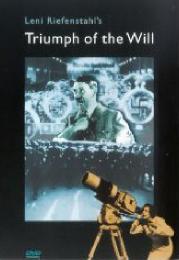
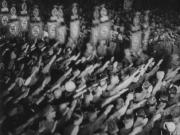

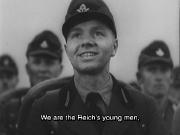
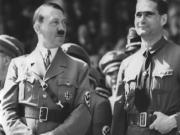
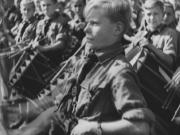

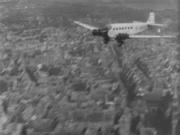
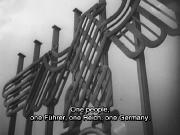
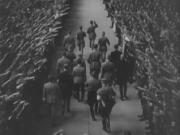
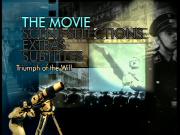

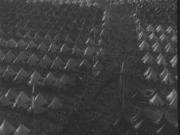



































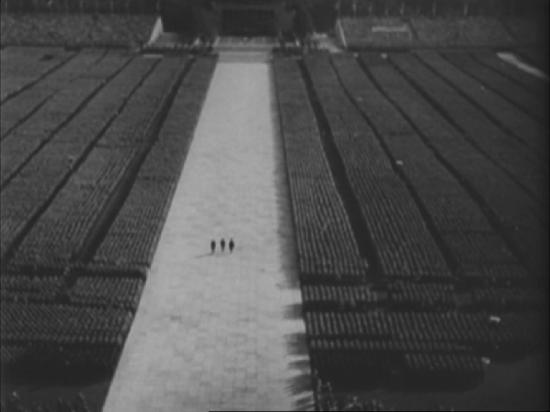
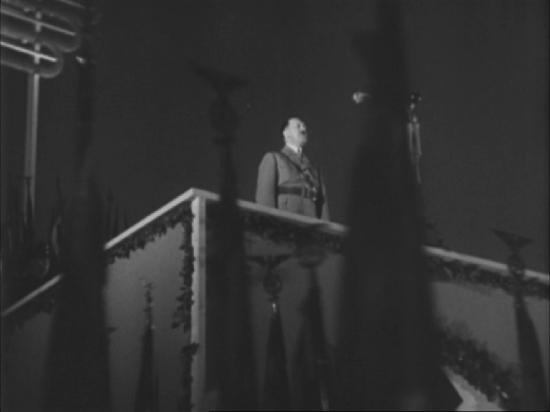


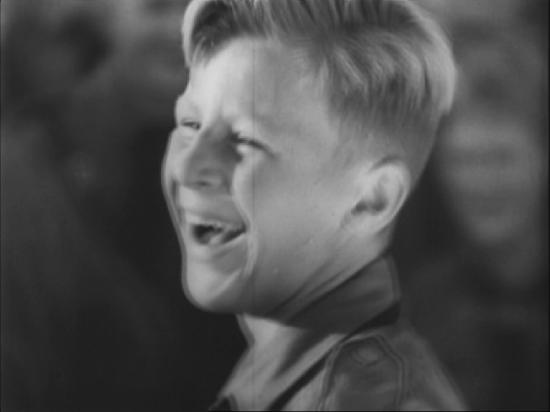
Your Opinions and Comments
Be the first to post a comment!